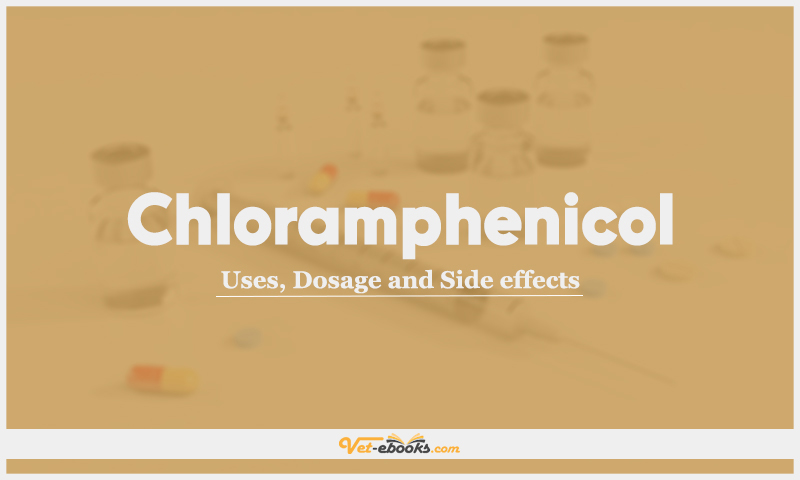Chloramphenicol: Uses, Dosage and Side Effects

Overview
Time-dependent antimicrobial that acts by binding to the 50S ribosomal subunit of susceptible bacteria, preventing bacterial protein synthesis.
Uses of Chloramphenicol
- A broad spectrum of activity against Gram-positive (e.g. Streptococcus, Staphylococcus), Gram-negative (e.g. Brucella, Salmonella, Haemophilus), and obligate anaerobic bacteria (e.g. Clostridium, Bacteroides fragilis).
- Other sensitive organisms include Chlamydia, Mycoplasma (unreliable in the treatment of ocular mycoplasmosis), and Rickettsia.
- High lipid solubility makes it suitable for the treatment of intraocular infections.
- It will also access the CNS.
- However, due to concerns of resistance development and human toxicity, systemic use should be restricted to life-threatening infections resistant to other antimicrobials (e.g. methicillin-resistant staphylococci)
Dose of Chloramphenicol in Dogs and Cats
Dogs:
• Ophthalmic: 1 drop q4–8h; ointment q8–12h.
• Systemic: 40–50 mg/kg i.v., i.m., s.c., p.o. q8h.
• CNS infections: 10–15 mg/kg p.o. q4–6h is recommended in some texts.
Cats:
• Ophthalmic: 1 drop q4–8h; ointment q8–12h.
• Systemic: 10–20 mg/kg slow i.v., i.m., s.c., p.o. q12h.
Drug Dosage Calculator
You Should Give:
Side Effects of Chloramphenicol in Dogs and Cats
- Reversible dose-related reversible bone marrow suppression can develop in all species.
- Owing to a reduced capacity to metabolize chloramphenicol, the cat is more susceptible
to bone marrow suppression. - Other adverse effects include nausea, vomiting, diarrhea and anaphylaxis.
Contraindications of Chloramphenicol in Dogs and Cats
- Patients with hepatic or renal dysfunction may need adjustment to the dose.
- Use with caution or avoid in nursing bitches or queens as crosses into milk.
Some Notes:
- Irreversible inhibition of hepatic cytochrome P450-dependent enzymes increases plasma levels of pentobarbital, phenobarbital, propofol, and oral hypoglycaemic agents.
- Recovery requires the synthesis of new liver enzymes and can take up to 3 weeks.
- Rifampin accelerates the metabolism of chloramphenicol, thus decreasing serum levels.
- Chloramphenicol may inhibit the activity of aminoglycosides and beta-lactams.
- May also competitively inhibit macrolide or lincosamide antimicrobials.
- Resistant organisms include Nocardia and Mycobacterium.
- Acquired resistance may occur in Enterobacteriaceae.
Tip
Do You Want To Increase Your Veterinary Knowledge and Practical Skills?
You Can Now Browse and Download +3000 Books For Veterinary Professionals & Students Online.
Download Veterinary Books




















